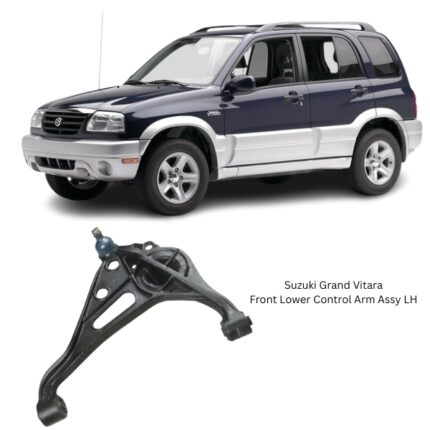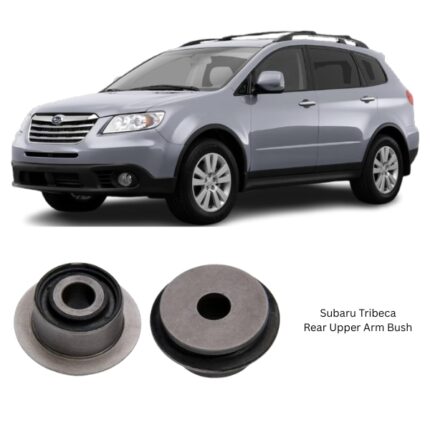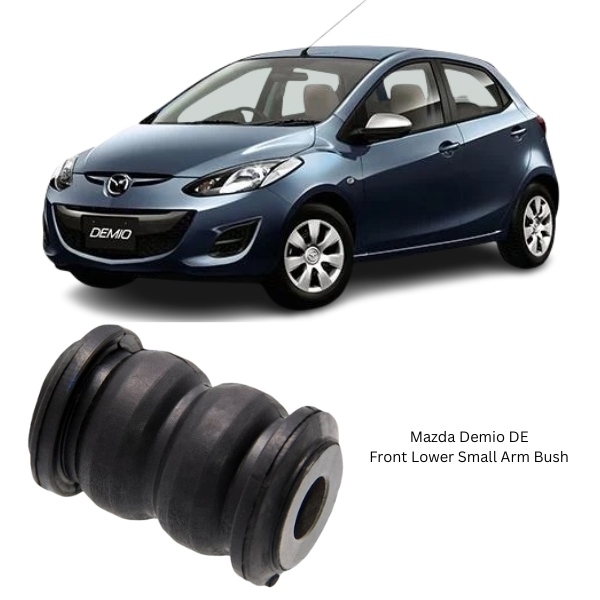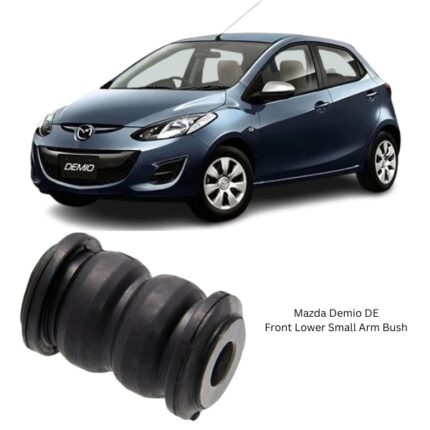Get Mazda Demio DE Front Lower Small Arm Bush D651-34-470 in Kenya
The Front Lower Small Arm Bush is a critical yet often overlooked component in a vehicle’s suspension system. Despite its small size, it plays a crucial role in ensuring ride comfort, handling precision, and overall vehicle stability. This bushing sits within the front lower control arm—specifically in the small arm section—providing a flexible but secure connection between the control arm and the chassis or subframe. It is designed to absorb vibrations, isolate road shocks, and allow controlled movement of suspension parts without compromising alignment or safety.
1. Primary Function
The Front Lower Small Arm Bush serves as a pivot point between the small lower control arm and the vehicle’s frame. It enables limited rotational movement while absorbing stress and isolating road noise. Key functions include:
-
Vibration Absorption: Helps reduce vibrations transmitted from the road to the vehicle’s chassis and cabin.
-
Noise Dampening: Acts as a cushion to prevent metal-on-metal contact, which can produce clunking or knocking sounds.
-
Alignment Preservation: Maintains proper positioning of suspension geometry under different loads and driving conditions.
-
Suspension Flexibility: Permits the arm to flex with the wheel as it moves over uneven surfaces, facilitating smoother operation.
Without this bushing, the vehicle’s suspension would transfer harsh vibrations and sounds directly to the cabin, and the handling characteristics would be severely compromised.
2. Location and Integration
The Front Lower Small Arm Bush is mounted within the lower control arm’s smaller extension, typically where the arm bolts to the chassis or subframe. It’s part of a broader system that connects the wheel hub and knuckle to the vehicle body. Depending on the suspension configuration, a single lower control arm may have one or multiple bushings—commonly a large and a small arm bush for more refined control.
Its strategic position allows it to manage fore-aft and lateral forces while enabling pivoting action required by the suspension travel.
3. Material Composition
Bushings are engineered to be durable yet flexible, accommodating a wide range of movements and load conditions. Common materials used in the Front Lower Small Arm Bush include:
-
Natural Rubber: Offers superior flexibility and shock absorption, ideal for comfort and standard driving conditions.
-
Synthetic Elastomers: Improved resistance to temperature extremes, wear, and chemicals.
-
Polyurethane (PU): More rigid and durable than rubber, often used in performance applications where precision is prioritized over ride softness.
-
Metal Sleeves: The bushing usually includes an inner and outer metal sleeve (steel or aluminum) for reinforcement and mounting stability.
Some advanced designs may feature a hydraulic-filled core for enhanced damping or be voided to permit multidirectional movement while preserving lateral stiffness.
4. Importance in Suspension Dynamics
The Front Lower Small Arm Bush contributes significantly to how the suspension behaves and how the car feels during different driving conditions. Its influence includes:
-
Ride Quality: By absorbing small bumps and vibrations, it smoothens out the ride, especially on uneven or rough roads.
-
Handling Performance: It allows the suspension arms to pivot while keeping the wheels properly aligned, which is vital for predictable steering and cornering.
-
Braking Stability: A firm bushing keeps the suspension geometry intact during braking, improving control and reducing unwanted movement.
-
Load Transfer Management: Distributes dynamic loads during acceleration, cornering, or deceleration, protecting suspension joints and tires.
Whether you’re navigating city streets or highways, the condition of the small arm bush affects both comfort and safety.
5. Signs of Wear and Damage
Over time and use, especially in vehicles driven on poor road surfaces or under heavy loads, the Front Lower Small Arm Bush can wear out or degrade. Common signs of wear include:
-
Clunking or Banging Noises: Especially when driving over bumps, potholes, or during braking.
-
Vague or Loose Steering Feel: Worn bushings can cause a delay in steering response or a sensation of instability.
-
Uneven Tire Wear: Misalignment due to bushing movement can cause tires to wear unevenly.
-
Vehicle Pulling or Wandering: A damaged bushing may shift under load, affecting wheel alignment and causing the car to pull to one side.
-
Visible Cracking or Detachment: On visual inspection, the rubber may appear cracked, torn, or separated from its sleeve.
Ignoring these symptoms can result in increased stress on other suspension components, leading to more extensive repairs and reduced driving safety.
6. Maintenance and Replacement
Though small and relatively inexpensive, replacing a worn Front Lower Small Arm Bush can drastically improve vehicle dynamics. Key considerations for replacement include:
-
Component Access: Replacing the bush typically requires removal of the control arm or pressing the bushing out and in with specialized tools.
-
Bushing Material: Choosing between rubber and polyurethane depends on the desired balance of comfort versus performance.
-
Pairwise Replacement: It’s generally advisable to replace bushings in pairs (left and right) to maintain symmetry in suspension response.
-
Professional Alignment: A wheel alignment is recommended after bushing replacement to restore optimal geometry.
Regular inspection—especially during routine maintenance or when replacing tires or shocks—can help detect early signs of bushing wear.
7. Variations and Design Types
The Front Lower Small Arm Bush may differ based on the vehicle’s suspension design, but generally falls into one of the following categories:
-
Solid Bushings: Made from a single solid piece of rubber or polyurethane. They offer durability and are common in everyday vehicles.
-
Voided Bushings: Contain air pockets or grooves to enhance flexibility in certain directions. Improves comfort without sacrificing alignment.
-
Hydraulic Bushings: Filled with fluid, providing enhanced damping and vibration isolation. Often used in luxury or high-end vehicles.
-
Spherical or Heim Joint Bushings: Found in racing or performance applications where precise movement is critical. Less forgiving in comfort.
Each type serves a specific purpose and may be selected based on driving environment, performance goals, and vehicle use case.
8. Engineering Considerations
Designing the Front Lower Small Arm Bush involves several engineering factors:
-
Durability and Fatigue Resistance: Must withstand thousands of cycles of compression, torsion, and environmental exposure without degrading.
-
Operating Temperatures: Needs to function in a wide range of temperatures, from freezing cold to engine bay heat.
-
Chemical Resistance: Should resist oils, fuels, road salt, and moisture.
-
Load Capacity: Engineered to handle the dynamic stresses from daily driving, potholes, cornering, and braking without losing shape or functionality.
Automakers perform extensive simulations and real-world testing to ensure these bushings maintain performance for tens of thousands of kilometers.
9. Practical Tips for Longevity
-
Avoid Aggressive Driving: Rapid starts, hard braking, and sharp turns accelerate bushing wear.
-
Routine Suspension Checks: Include bushing inspection in standard maintenance to catch issues early.
-
Protect from Fluid Exposure: Keep an eye on leaking shocks or engine fluids that can degrade rubber bushings.
-
Replace in Pairs: Balanced wear improves handling and avoids uneven suspension response.
Follow us on Facebook for more parts.





Reviews
Clear filtersThere are no reviews yet.